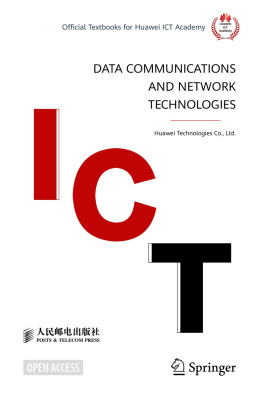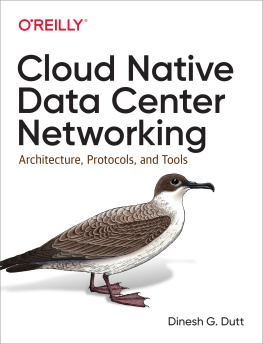Dinesh Goyal - Design and Analysis of Security Protocol for Communication
Here you can read online Dinesh Goyal - Design and Analysis of Security Protocol for Communication full text of the book (entire story) in english for free. Download pdf and epub, get meaning, cover and reviews about this ebook. year: 2020, publisher: Wiley-Scrivener, genre: Politics. Description of the work, (preface) as well as reviews are available. Best literature library LitArk.com created for fans of good reading and offers a wide selection of genres:
Romance novel
Science fiction
Adventure
Detective
Science
History
Home and family
Prose
Art
Politics
Computer
Non-fiction
Religion
Business
Children
Humor
Choose a favorite category and find really read worthwhile books. Enjoy immersion in the world of imagination, feel the emotions of the characters or learn something new for yourself, make an fascinating discovery.

- Book:Design and Analysis of Security Protocol for Communication
- Author:
- Publisher:Wiley-Scrivener
- Genre:
- Year:2020
- Rating:5 / 5
- Favourites:Add to favourites
- Your mark:
- 100
- 1
- 2
- 3
- 4
- 5
Design and Analysis of Security Protocol for Communication: summary, description and annotation
We offer to read an annotation, description, summary or preface (depends on what the author of the book "Design and Analysis of Security Protocol for Communication" wrote himself). If you haven't found the necessary information about the book — write in the comments, we will try to find it.
Dinesh Goyal: author's other books
Who wrote Design and Analysis of Security Protocol for Communication? Find out the surname, the name of the author of the book and a list of all author's works by series.
Design and Analysis of Security Protocol for Communication — read online for free the complete book (whole text) full work
Below is the text of the book, divided by pages. System saving the place of the last page read, allows you to conveniently read the book "Design and Analysis of Security Protocol for Communication" online for free, without having to search again every time where you left off. Put a bookmark, and you can go to the page where you finished reading at any time.
Font size:
Interval:
Bookmark:

- Chapter 2
- Chapter 3
- Chapter 4
- Chapter 5
- Chapter 6
- Chapter 7
- Chapter 9
- Chapter 10
- Chapter 12
- Chapter 13
Scrivener Publishing
100 Cummings Center, Suite 541J
Beverly, MA 01915-6106
Publishers at Scrivener
Martin Scrivener ()
Phillip Carmical ()
Edited by
Dinesh Goyal, S. Balamurugan, Sheng-Lung Peng and O.P. Verma

This edition first published 2020 by John Wiley & Sons, Inc., 111 River Street, Hoboken, NJ 07030, USA and Scrivener Publishing LLC, 100 Cummings Center, Suite 541J, Beverly, MA 01915, USA
2020 Scrivener Publishing LLC
For more information about Scrivener publications please visit www.scrivenerpublishing.com.
All rights reserved. No part of this publication may be reproduced, stored in a retrieval system, or transmitted, in any form or by any means, electronic, mechanical, photocopying, recording, or otherwise, except as permitted by law. Advice on how to obtain permission to reuse material from this title is available at http://www.wiley.com/go/permissions.
Wiley Global Headquarters
111 River Street, Hoboken, NJ 07030, USA
For details of our global editorial offices, customer services, and more information about Wiley products visit us at www.wiley.com.
Limit of Liability/Disclaimer of Warranty
While the publisher and authors have used their best efforts in preparing this work, they make no representations or warranties with respect to the accuracy or completeness of the contents of this work and specifically disclaim all warranties, including without limitation any implied warranties of merchantability or fitness for a particular purpose. No warranty may be created or extended by sales representatives, written sales materials, or promotional statements for this work. The fact that an organization, website, or product is referred to in this work as a citation and/or potential source of further information does not mean that the publisher and authors endorse the information or services the organization, website, or product may provide or recommendations it may make. This work is sold with the understanding that the publisher is not engaged in rendering professional services. The advice and strategies contained herein may not be suitable for your situation. You should consult with a specialist where appropriate. Neither the publisher nor authors shall be liable for any loss of profit or any other commercial damages, including but not limited to special, incidental, consequential, or other damages. Further, readers should be aware that websites listed in this work may have changed or disappeared between when this work was written and when it is read.
Library of Congress Cataloging-in-Publication Data
ISBN 978-1-119-55564-3
Cover image: Pixabay.Com
Cover design by Russell Richardson
Over the past few decades, digital communication has grown by leaps and bounds. The expanding use of the internet in our day-to-day lives has resulted in a six-fold increase in the number of internet users in the past two decades alone, leading to an evolution of technologies for home use such as Cloud Computing, Artificial Intelligence, Big Data Analytics and Machine Learning.
Today, 30% of the total business worldwide is done online, with approximately 25% of banking transactions being done exclusively from smart-phones and laptops at home or the office. Moreover, 50% of the worlds population is currently using social media as a platform for connecting with their friends and colleagues; and primary and higher education institutions are using internet-based education as a tool for enriching students knowledge and at the same time keeping track of their academic performance. Now even Government agencies are moving to internet platforms, with most of their services currently available online.
Although this huge volume of internet usage has made life easier for every individual, insecurity or loss of information continues to be a major concern. There have been many cases across the globe of breach of information or platforms leading to loss of data, money, faith and much more.
Various research scientists have done a lot of work over the past five to six decades to develop security protocols for ensuring minimization of breach of data either being stored or under one network. The history of information security has been quite long and has evolved from the era of its birth to present date. During this period millions of cryptographic algorithms have evolved, some of which have been quite successful for ensuring many secure communications across the World Wide Web.
The application of security has changed as technology has evolved from tube computing to palm (nano) computing. Presently, we have many different security protocols for various types of applications of the internet like email, web browsing, webchat, video streaming, cloud-based communication, closed group communication, banking transactions, e-commerce and many more both at network level and user end.
Security has evolved to counter many kinds of attacks like intrusion, manipulation, spoofing and so on, for which techniques like cryptography, message digest, digital signature, steganography, watermarking, time stamping, access control, etc., have been incorporated into various layers of communication, resulting in protocols like HTTP, SMTP, RTP, RTCP, FTP, UDP and many more.
The issue with these protocols is that they are not being reviewed from time to time, nor are they being compiled and compared in one place. Our aim in publishing this book is to combine the analysis and comparison of various protocols which might act as a Mobile Communication Security Protocol or Multimedia Streaming Security Protocol. Therefore, this book discusses and analyzes some of the security protocols available for communication in various application areas.
The 15 chapters of this book are well placed to illustrate the security protocols for communication. Following is a brief synopsis of each chapter:
- gives a detailed history of communication and the evolution of its protocols; and relates the evolution of security and the need for it in communication protocols.
- discusses the evolution of various information security algorithms, from basic models to complex information security algorithms currently in use.
- digs further into security algorithms by focusing on the philosophy of security by cryptostake schemes, a model for public key cryptographic techniques.
- introduces a new technique for key management of security algorithms being implemented over a communication channel.
- introduces a soft computing-based intrusion detection system with reduced false positive rate, which helps in intrusion detection in a communication channel, even if the signature of the intruder is not available.
- proposes a new simple cipher, namely recursively paired arithmetic technique (RPAT): A field-programmable gate array (FPGA)-based block cipher simulation and its cryptanalysis.
- reviews security protocols like RTP, RTMP, UDP, etc., for multimedia communication over a channel; it attempts to analyze the performance of these protocols on the basis of delay as parameter.
Font size:
Interval:
Bookmark:
Similar books «Design and Analysis of Security Protocol for Communication»
Look at similar books to Design and Analysis of Security Protocol for Communication. We have selected literature similar in name and meaning in the hope of providing readers with more options to find new, interesting, not yet read works.
Discussion, reviews of the book Design and Analysis of Security Protocol for Communication and just readers' own opinions. Leave your comments, write what you think about the work, its meaning or the main characters. Specify what exactly you liked and what you didn't like, and why you think so.








